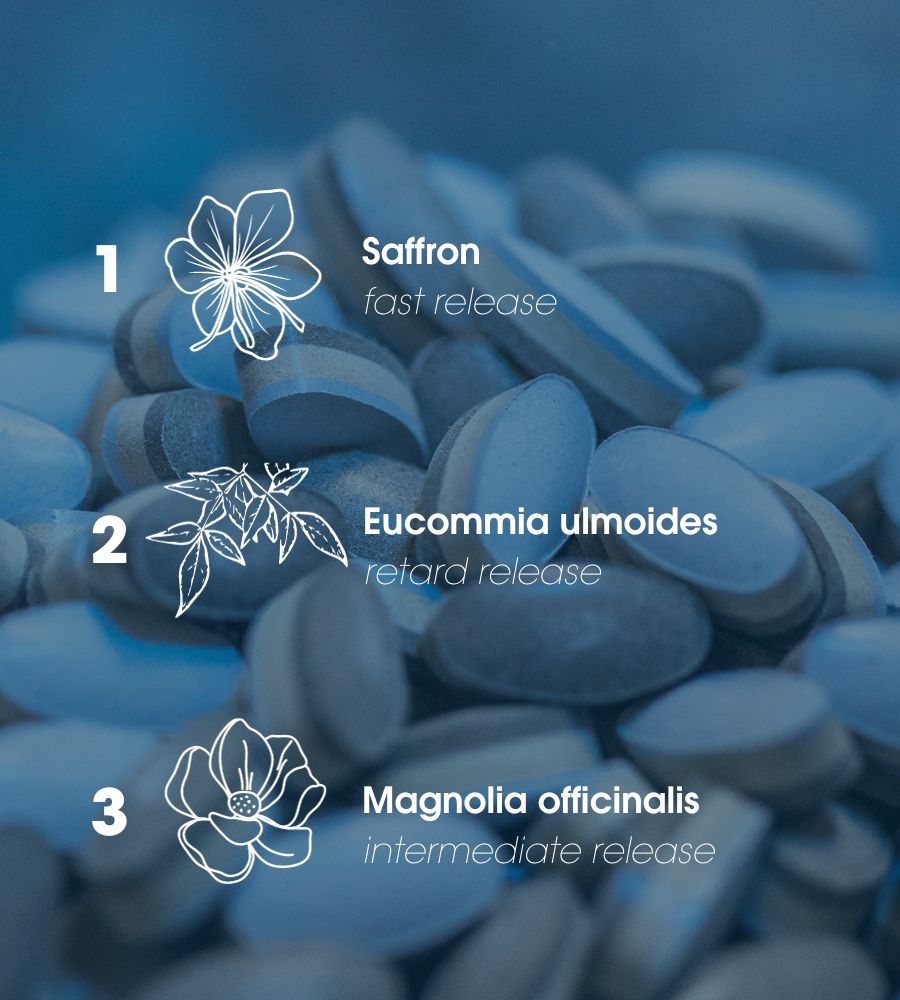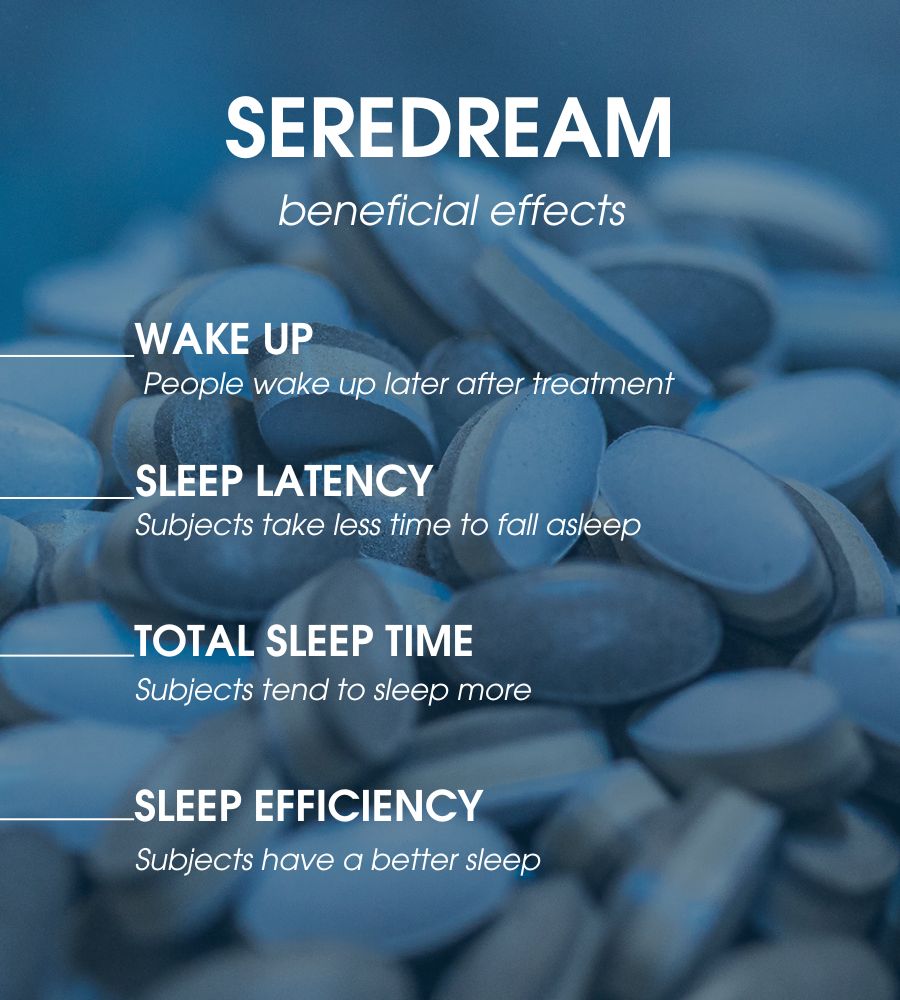

Sleep is one of the essential factors for maintaining good overall health. In addition, poor quality is associated with a significant reduction in work performance and impaired daytime functions [1] and can affect social and work behaviour.
As shown by numerous studies in this regard, sleep disorders are a widespread and ever-expanding problem. In a recent survey, 62% of adults worldwide said they did not sleep as well as they would like, 67% reported having sleep disorders at least once every night, and 44% said their sleep quality had worsened in the five years before the survey. As a result, 8 out of 10 adults worldwide wanted to improve their sleep, but 60% had not sought medical help [2].
Numerous studies have observed how these statistics have drastically worsened due to the COVID-19 pandemic: stress and related concerns have increased the spread of these disorders, leading people to give greater importance to rest and seek solutions to improve their quality of life.
Recently, sleep quality has been defined as the satisfaction of the experience of rest that depends on aspects such as the onset of sleep, its maintenance, its quantity and the level of refreshment perceived upon waking [3].
The National Sleep Foundation has published key indicators of good quality rest, including increased time spent in bed, falling asleep in 30 minutes or less, waking up no more than once per night, and for up to 20 minutes after falling asleep [4].
The Third Edition of the International Classification of Sleep Disorders lists seven categories of disorders:
insomnia, especially chronic insomnia;
respiratory disorders, such as snoring and obstructive apnea;
central disorders of hypersomnolence, such as narcolepsy and idiopathic hypersomnia;
sleep-wake circadian rhythm disturbances, including jet lag and delayed sleep-wake disorder;
parasomnias, such as sleepwalking, rapid eye movement disorder (REM) and sleep paralysis;
movement disorders, such as restless legs syndrome;
other sleep disorders.
But what are the causes? People who complain of disturbed and poor sleep might have high arousal levels [5]. Hyper-arousal is a state of cognitive and physiological activation that can constantly be present. This state can lead to a long latency of falling asleep with the difficulty of "turning off" the wakefulness centers [6].
Considering the hyper-arousal model of Riemann and colleagues [7], according to which the hyperactivity of the arousal system and the hypoactivity of the sleep system commutatively cause insomnia, patients with difficulty falling asleep due to this condition could benefit from compounds capable of reducing cognitive and physiological activation during the evening hours.
Patients with insomnia or poor sleep quality often resort to taking medications when it is not possible or practical to conduct cognitive-behavioral therapy. While sedatives and hypnotics are effective, they have the potential for abuse, cross-reactivity with other drugs, and side effects, including memory loss, abnormal thoughts, behavioral alterations, and headaches [8,9]. A valid alternative can, therefore, be represented by food supplements such as Seredream, a nutraceutical compound developed by the Research and Development laboratories of Biofarma Group.

Seredream is an innovative nutraceutical formulation that is a triple-layer tablet with the main active ingredients: saffron, Eucommia ulmoides and Magnolia officinalis.
The first layer of the tablet, composed of saffron, slows down the heartbeats of the subject, allowing a gradual falling asleep. This reduction in blood pressure occurs thanks to the action of safranal, one of the active ingredients of saffron, as found in several studies [10,11].
Magnesium has also been included in the same layer, which reduces tiredness and fatigue and is also considered an anti-stress that can protect the heart and blood circulation (claim EFSA) [12].
The second layer is composed of Eucommia ulmoides: this plant is considered a sedative capable of increasing the duration and quality of sleep [13] and reducing blood pressure through inhibition of the beta-adrenergic system, thus allowing a reduction in fatigue.
Finally, the third layer includes Magnolia officinalis, used as a remedy to promote relaxation thanks to its proven anxiolytic and relaxing activity for the muscles.
The three layers of the tablet are released at different times to allow optimal action of all components. The first layer has a rapid release to relax the individual and the consequent gradual falling asleep. The second has a delayed release, allowing continuous sleep during all its phases, avoiding awakenings thanks to the soothing effect. The third layer has an intermediate release to act immediately after the relaxing action of saffron and, therefore, on the phase of falling asleep.
The efficacy of the Seredream product against sleep problems was tested through a monocenter, double-blind, randomized clinical trial carried out in collaboration with the San Raffaele Hospital in Milan.
The trial was conducted on a sample of 67 subjects, men and women aged between 18 and 65 years, with disturbed sleep and poor quality.
Participants completed self-diagnostic questionnaires before and after the treatment period and a sleep diary each morning.
In the first trial phase, no statistically significant differences were observed in comparing the results obtained from the nutraceutical compound and placebo. The cause of this may be related to the intense sensitivity of sleep disorders to the placebo effect. Several studies conducted on patients who have insomnia have found that participants in placebo treatment have experienced a significant improvement in symptoms, thus suggesting that problems like this may be sensitive to this effect, according to which the context of the therapy itself arouses positive expectations that trigger an improvement [14-16]. This is also joined by the COVID-19 factor: the study was conducted during the recent pandemic, which had led many people to experience worsening sleep-related problems. The strong desire perceived by the subjects to solve these problems further favored the presence of a placebo effect.

To eliminate these problems, it was decided to move on to a second phase of analysis where the comparison was not active-placebo but pre-post treatment with the active.
The results obtained from this second phase of analysis showed statistically significant changes related to:
awakening, i.e., subjects got up later after treatment than before treatment, probably reflecting longer sleep;
latency of falling asleep, i.e., the fact that participants after treatment (or at least at the end of the treatment period) took less time to fall asleep;
sleep efficiency, the subjects showed better sleep quality after taking the active product.
These results were obtained following 28 days of treatment with the product Seredream, during which no adverse events were observed in the participating subjects.
Concerning the latency of falling asleep, it is essential to underline that most drugs administered in case of sleep disorders have the effect of falling asleep between 9 and 22 minutes, depending on the product. In this sense, Seredream recorded a falling asleep latency of about 11 minutes, allowing the product to position itself as the drug in terms of therapeutic effects. However, it is not and does not involve the side effects often associated with these pharmaceutical products.
Seredream is an innovative nutraceutical compound safe and valuable to counteract mild sleep disorders, thanks to its ability to improve the quality of rest, reduce the time for falling asleep, and promote a longer rest time.
Edited by:
Arianna Vanelli: R&D Scientific and Innovation Manager
Stefania Murzilli: R&D Scientific Coordinator
Wang WL, Chen KH, Pan YC, Yang SN, Chan YY. The effect of yoga on sleep quality and insomnia in women with sleep problems: a systematic review and meta-analysis. BMC Psychiatry. 2020;20(1):195.
Philips Global Sleep Survey, Philips 2019
Gellman MD, Turner JR, editors. Encyclopedia of Behavioral Medicine. New York, NY: Springer New York; 2013 [cited 2023 Feb 2]. Available from: http://link.springer.com/10.1007/978-1-4419-1005-9 [Epub ahead of print].
Ohayon M, Wickwire EM, Hirshkowitz M, Albert SM, Avidan A, Daly FJ, et al. National Sleep Foundation’s sleep quality recommendations: first report. Sleep Health. 2017;3(1):6–19.
Halász P, Terzano M, Parrino L, Bódizs R. The nature of arousal in sleep. J Sleep Res. 2004;13(1):1–23.
Barnard K, Broman-Fulks J, Michael K, Webb R, Zawilinski L. The effects of physiological arousal on cognitive and psychomotor performance among individuals with high and low anxiety sensitivity. Anxiety, stress, and coping. 2011;24:201–16.
Riemann D, Spiegelhalder K, Feige B, Voderholzer U, Berger M, Perlis M, et al. The hyperarousal model of insomnia: a review of the concept and its evidence. Sleep Med Rev. 2010 Feb;14(1):19–31.
Holbrook AM, Crowther R, Lotter A, Cheng C, King D. Meta-analysis of benzodiazepine use in the treatment of insomnia. CMAJ. 2000;162(2):225–33.
Buscemi N, Vandermeer B, Friesen C, Bialy L, Tubman M, Ospina M, et al. The Efficacy and Safety of Drug Treatments for Chronic Insomnia in Adults: A Meta-analysis of RCTs. J Gen Intern Med. 2007;22(9):1335–50.
Hosseinzadeh H, Noraei NB. The anxiolytic and hypnotic effect of Crocus sativus aqueous extract and its constituents, crocin and safranal, in mice. Phytother Res. 2009;23(6):768–74.
Imenshahidi M, Razavi BM, Faal A, Gholampoor A, Mousavi SM, Hosseinzadeh H. The Effect of Chronic Administration of Safranal on Systolic Blood Pressure in Rats. Iran J Pharm Res. 2015;14(2):585–90.
Cao Y, Zhen S, Taylor AW, Appleton S, Atlantis E, Shi Z. Magnesium Intake and Sleep Disorder Symptoms: Findings from the Jiangsu Nutrition Study of Chinese Adults at Five-Year Follow-Up. Nutrients. 2018;10(10):E1354.
Li X, Zhu W, Yang L, Fei D, Fan J, Du L, et al. Evaluation of the sedative and hypnotic effects of Eucommiol in Eucommia. Natural Product Research. 2013;27(18):1657–9.
Winkler A, Rief W. Effect of Placebo Conditions on Polysomnographic Parameters in Primary Insomnia: A Meta-Analysis. Sleep. 2015;38(6):925–31.
McCall WV, D’Agostino R, Dunn A. A meta-analysis of sleep changes associated with placebo in hypnotic clinical trials. Sleep Medicine. 2003 Jan;4(1):57–62.
Bélanger L, Vallières A, Ivers H, Moreau V, Lavigne G, Morin CM. Meta-analysis of sleep changes in control groups of insomnia treatment trials. J Sleep Res. 2007 Mar;16(1):77–84.
Castelnuovo A., Oldani A., Casoni F., Mombelli S., Murzilli S., Vanelli A., Marelli S., Efficacy of a multilayer nutraceutical compound in subjects with poor sleep quality: a double-blind, randomized, placebo-controlled study.